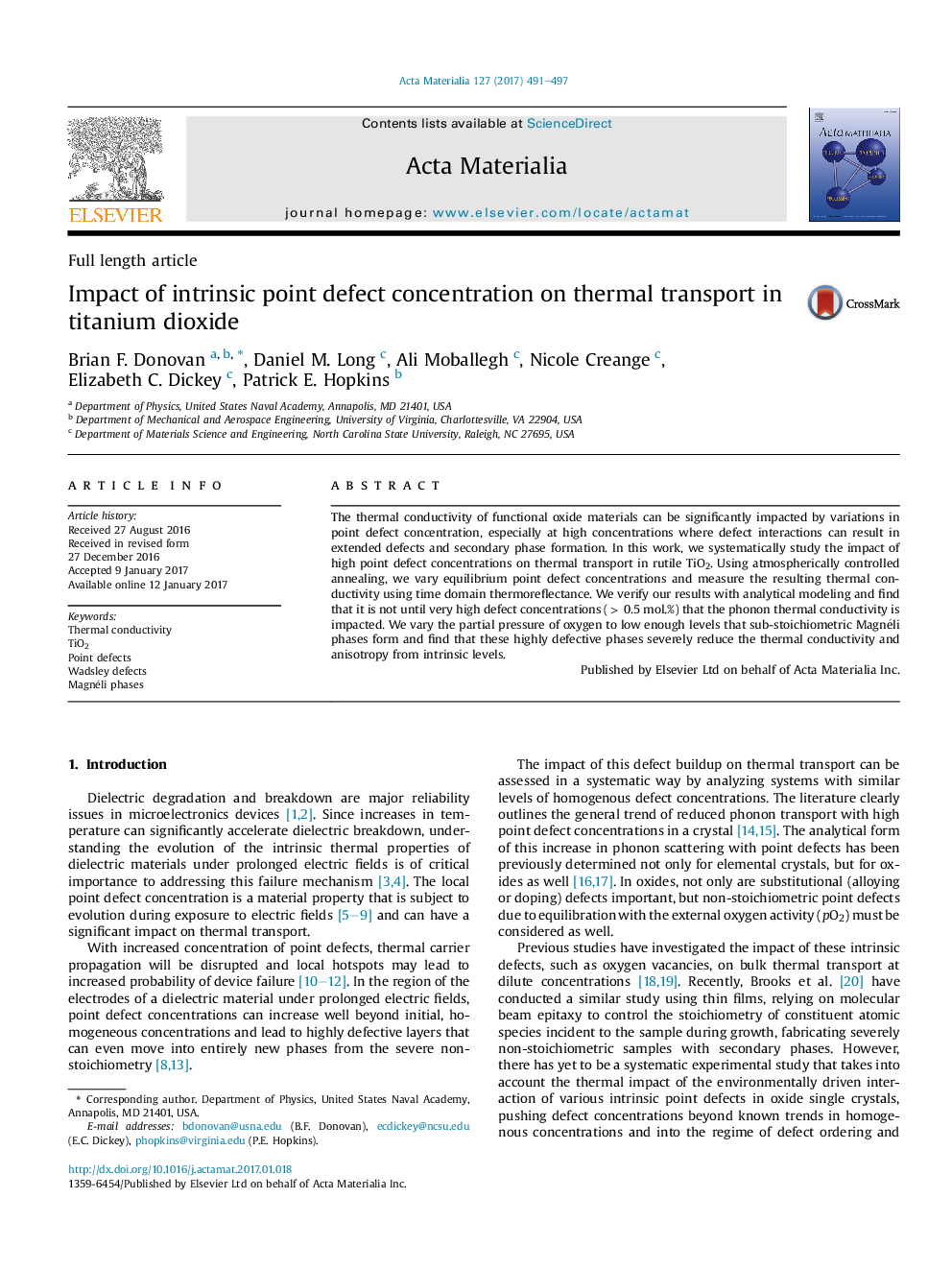| Article ID | Journal | Published Year | Pages | File Type |
|---|---|---|---|---|
| 5436352 | Acta Materialia | 2017 | 7 Pages |
The thermal conductivity of functional oxide materials can be significantly impacted by variations in point defect concentration, especially at high concentrations where defect interactions can result in extended defects and secondary phase formation. In this work, we systematically study the impact of high point defect concentrations on thermal transport in rutile TiO2. Using atmospherically controlled annealing, we vary equilibrium point defect concentrations and measure the resulting thermal conductivity using time domain thermoreflectance. We verify our results with analytical modeling and find that it is not until very high defect concentrations (>> 0.5 mol.%) that the phonon thermal conductivity is impacted. We vary the partial pressure of oxygen to low enough levels that sub-stoichiometric Magnéli phases form and find that these highly defective phases severely reduce the thermal conductivity and anisotropy from intrinsic levels.
Graphical abstractFigure optionsDownload full-size imageDownload high-quality image (229 K)Download as PowerPoint slide
